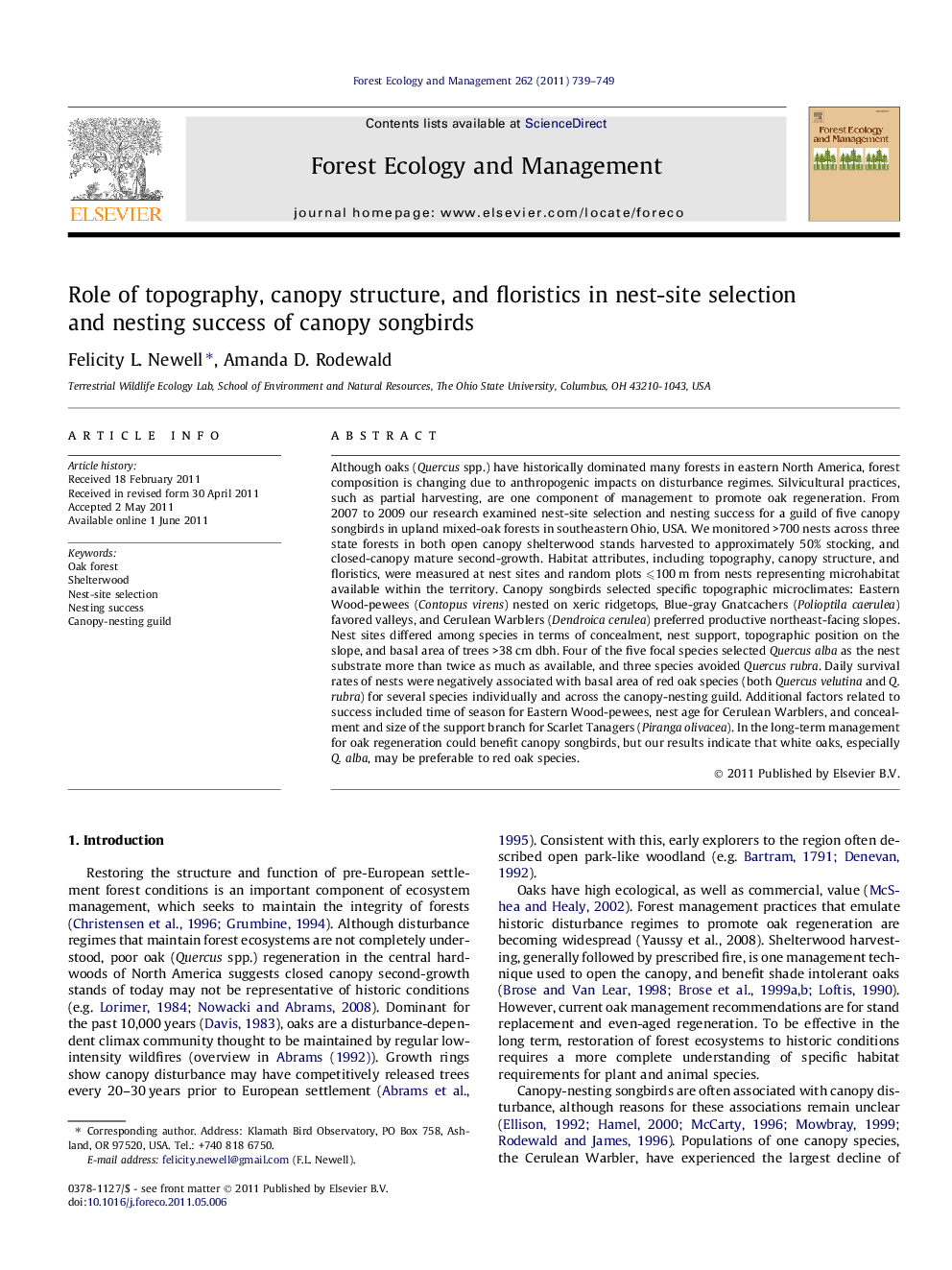| کد مقاله | کد نشریه | سال انتشار | مقاله انگلیسی | نسخه تمام متن |
|---|---|---|---|---|
| 88065 | 159281 | 2011 | 11 صفحه PDF | دانلود رایگان |

Although oaks (Quercus spp.) have historically dominated many forests in eastern North America, forest composition is changing due to anthropogenic impacts on disturbance regimes. Silvicultural practices, such as partial harvesting, are one component of management to promote oak regeneration. From 2007 to 2009 our research examined nest-site selection and nesting success for a guild of five canopy songbirds in upland mixed-oak forests in southeastern Ohio, USA. We monitored >700 nests across three state forests in both open canopy shelterwood stands harvested to approximately 50% stocking, and closed-canopy mature second-growth. Habitat attributes, including topography, canopy structure, and floristics, were measured at nest sites and random plots ⩽100 m from nests representing microhabitat available within the territory. Canopy songbirds selected specific topographic microclimates: Eastern Wood-pewees (Contopus virens) nested on xeric ridgetops, Blue-gray Gnatcachers (Polioptila caerulea) favored valleys, and Cerulean Warblers (Dendroica cerulea) preferred productive northeast-facing slopes. Nest sites differed among species in terms of concealment, nest support, topographic position on the slope, and basal area of trees >38 cm dbh. Four of the five focal species selected Quercus alba as the nest substrate more than twice as much as available, and three species avoided Quercus rubra. Daily survival rates of nests were negatively associated with basal area of red oak species (both Quercus velutina and Q. rubra) for several species individually and across the canopy-nesting guild. Additional factors related to success included time of season for Eastern Wood-pewees, nest age for Cerulean Warblers, and concealment and size of the support branch for Scarlet Tanagers (Piranga olivacea). In the long-term management for oak regeneration could benefit canopy songbirds, but our results indicate that white oaks, especially Q. alba, may be preferable to red oak species.
► We examine nest-site selection and nesting success of five canopy songbirds.
► Canopy species select Quercus alba as nest sites.
► Red oak species are avoided and negatively associated with nesting success.
► Management for Q. alba may benefit canopy songbirds, but causes for differences among oak species remain to be determined.
Journal: Forest Ecology and Management - Volume 262, Issue 5, 1 September 2011, Pages 739–749